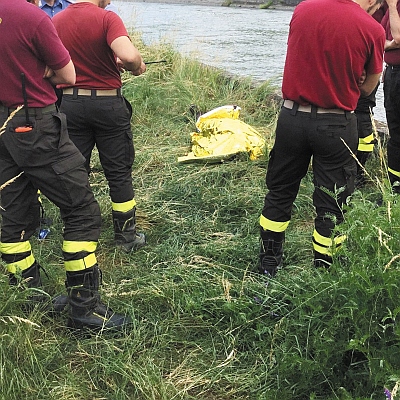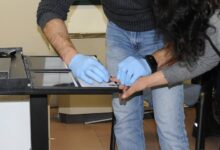The most dangerous phrase in homicide and crime scene investigation is “because we’ve always done it this way.” And nothing cripples a death investigation faster than failing to consider alternatives. Keeping an open mind, starting the investigation where the investigation actually starts, reaching out to others for ideas, partnership, and additional resources, many investigatory obstacles can be overcome. Homicide investigation today has shifted to becoming victim-centered. In decades past, the suspect-centered paradigm was the norm, largely leaving out much of the vital information about person everyone is rallying for and the reason for why the case exists in the first place…the death of the victim.
Human beings are Homo sapiens. Homo is the Latin word for man and cide in Latin combines the word kill with the act of killing. So homicide is a term that broadly defines as the killing of one human being by another human being. There are many types of homicide, such as fratricide, which is the killing of one’s brother or uxoricide, which is the killing of one’s wife.
Violence against women is a problem worldwide. It is not specific country’s problem. Rather, violence against women in an international problem that affects women across the globe from the richest to the poorest of countries. Violence against women is exhibited in many ways, such as verbal abuse, emotional abuse, psychological abuse, physical abuse, financial abuse, all the way to sex trafficking, deprivation of liberty through slavery, and sexual assault.
Generally speaking, intimicide (in-TIM-i-side) is the killing of one intimate partner by another former, current, or temporary intimate partner. However, intimicide deaths do not include those intimate partners who fall victim to a serial predator through the act of solicited sex for profit. Like many other countries, intimicide is a problem in the United States of America. Just in 2013 alone, men killed more than 1,600 women across the United States. According to new research, just in 2013 alone, men killed more than 1,600 women across the United States (Violence Policy Center, 2015). The offenders were known most victims in most instances, as they were men with whom the victims were intimately involved as wives and girlfriends. In the majority of these cases, these male offenders used firearms to shoot their female intimate partners during the course of an argument.
Cases that involve the death of a female victim by firearm used by her male intimate partner are often difficult to move forward in criminal investigation. Physical evidence, such as DNA or fingerprints are expected to found because the crime scene is often the marital residence or a mutual environment to both the victim and the offender. Another reason intimicide cases can be challenging to resolve is because the crime scene does not always put the weapon back in the hand of the offender. This is the situation in cases of murder when the offender the manipulates the physical evidence in the scene before the arrival of the police and then most often his or her behavioral evidence as well to misdirect the investigation towards his desired outcome.
Arguments are conflict. Murder is conflict resolution for the offender. And even in “emergency murder” or unplanned murder that occurs as the result of spontaneous combustion of the victim-offender relationship, the offender always benefits from the death of victim if it means only that he feels better, his anger is satisfied, and the conflict is now over. Intimicide is most often underpinned by the pervasive pattern of domestic violence and the core of domestic violence is power and control. The core of intimicide is also power and control, but while all intimicides are grounded in the ultimate power and control of the victim, some intimicides also are about anger and some are not. Regardless, holding the balance in his or her hands as the victim transitions from life to death is the ultimate power and control for the offender.
The relationship between the victim and the offender is not part of the investigation in these cases it is the investigation. The victim-offender relationship is what tells the story of the how the victim became a victim and how the physical and behavioral evidence recovered from the crime scene relates to the case in context. For this reason and for many others, the fact that victimology should be thoroughly conducted within the first 48-hours of a death investigation cannot be understated.
But, even though it might be easy to state all of the above, working in the field of crime scene and homicide investigation in intimicide cases can be daunting even for the seasoned and well trained investigator. This is where Conflict>Resolution>Benefit Theory (CRB) can help. Murder is actually simple to understand when it is categorized into three stages: Stage 1 – Preceding Victim-Offender Conflict; Stage 2 – Conflict Resolution; Stage 3 – Offender Benefits. Preceding victim-offender conflict can be anything, such as an spontaneous or ongoing argument, an impending divorce, a child custody issue, a child support issue, an adulterous affair, an impending breakup, financial debt, an unwanted pregnancy, the need to keep a secret, or a classic conflict for murder…rejection. So the first step of using CRB in the field is to identify any victim-offender conflict.
Again, murder is conflict resolution for the offender. Stage 2 of CRB is Resolution or the fact that the offender chooses murder to resolve the conflict with the victim. Stage 2 is where investigators identify all the crime scene characteristics, including injuries to the victim in context of how he or she relates to biological, physical, and behavioral evidence recovered at the scene. Some investigators get tunnel vision focusing on just the physical evidence, “No physical evidence, no case” kind of thinking. But murder is the “interactionary” result of the Offender-Weapon-Victim Force and Intensity Continuum. The weapon did not kill the victim; instead the offender’s behavior on one end of the weapon killed the victim.
While the crime scene is definitely the reflection of the offender’s personality the crime scene is arguably also a reflection of the offender’s most authentic self as well. One very good reason for this could be because the act of murder between two people behind closed doors is just as intimate as the physical act of sex between them. The physical act of sex generally occurs privately and what goes on before, during, and after is only known to the two people engaged in the sexual act. So by listing all the observable crime scene characteristics, investigators learn more about the victim, more about the personality of the offender, more about the physical and behavioral evidence, more about how all of these pieces interrelate, and the before-during-after activities. Interestingly, along with the aforementioned, well-trained professionals might also observe a reflection of the motive for murder in the crime scene because the crime scene often mirrors the preceding victim-offender conflict as well.
Third, the offender always benefits from the victim’s death in some way. Even satiation the offender’s anger towards the victim is at very least an organic benefit of the victim’s death. Stage 3 of CRB is where investigators identify and record all the ways the offender benefits from the death of the victim (e.g., financially, anger, child custody, avoid costly divorce, moves on with new love interest, etc.). Further, many times the Stage 1 Preceding Victim-Offender Conflict with link to items listed Stage 3 Offender Benefits. But applying CRB requires precise investigatory efforts because reverberations of domestic violence are wide spread far beyond the scope of what is immediately medically observable in the wound pattern on the victim’s body in the crime scene. It takes time to build the intimicide murder case. And in many cases it takes extra time because so often intimicide is linked to crime scene staging. But there is fast and effective tool investigators can use to raise awareness that a scene might be staged by answering the three key questions of the Staging Trilogy.
The Staging Trilogy is designed only to build awareness and to raise the question “could this scene be staged?” not to tell investigators that the scene is staged. When investigators arrive on scene, it is highly recommended to begin by asking, “Is there someone in conflict with this victim? Who is in conflict with this victim?” and similar questions. Then ask, “Who discovered the victim?” Then, “Who called 911?” Have the 911 call tape pulled and listen to it before entering the scene. This is not to create or enhance investigator bias, but rather to start the investigation where the investigation starts…with the call to 911 to report an incident. If preceding conflict is found between the victim and the person who discovered the victim and that person also called 911 proceed with caution especially if the person called 911 to report the victim committed suicide with a firearm during the course of an argument.
Because CRB and the Staging Trilogy have been so well received by investigators and students worldwide during presentation of the Crime Scene Staging Symposium, Laura Pettler & Associates in partnership with colleagues, Alabama State Bureau of Investigation Special Agent Bill LaPradd, and former investigator now IT Specialist Bret Rusnak are building an App that investigators will be able to use in the field to help bring awareness potentially staged crime scenes in intimicide cases. The app will contain information about victim-offender conflicts, victim discovery, 911 call triaging, crime scene characteristics in relation to physical and behavioral evidence. “For law enforcement to have a tangible application like the CRB Trilogy App in the field is like having Dr. Pettler standing next to you on the scene,” said Bill LaPradd, “Think of the logical, look for the probable, and expect nothing reasonable.”
The app will be user friendly and fast to use in the field. The first part of the App will collect demographic information about the case and individuals involved (Figure 1). The App will save this information each time the screen advances to the next screen. At the end of the Case Information Section, the App will save the information into a case file and a case file number can be entered manually or be assigned. Once a user is finished using the App, the entire case file can be exported to another device like a laptop or desktop computer in a useable file format.
Pursuant to CRB, the APP will contain Stage 1 (Figure 2): Conflict icons the user will click on after entering the Case Information. The Conflict icons will then also appear in the Results screen later in list form towards assessing which of the conflicts are resolved by the victim’s death and how the offender might benefit from the victim’s death by that conflict having been resolved. Users will be able to select as many conflicts as they can identify and go back to add additional conflicts as the investigation and victimology are both fluid in all investigations, thus, the App adapts to the needs of the investigation.
Victim Discovery is the second prong of the Staging Trilogy (Figure 3). Research has shown that most crime scene stagers discover their victim’s. The staged crime scene is only limited by the imagination of the crime scene stager, his or her physical ability, and his or her enthusiasm and ambition for staging the scene. It is arguable that staging is also a function of an individual’s envirosocioculturalism or the way an individual’s environment, the facets of the social structure where he or she resides, and the cultural aspects of both them influence the way someone lives and the way he or she kills.
The App will continue with screens that categorize information about the crime scene and staging elements if those are present. The App will end with a results section that summarizes the events of the case. ©
REFERENCE
Violence Policy Center (2015, September). More than 1,600 women murdered by men in one year, new study finds. Retrieved from http://www.vpc.org/press/more-than-1600-women-murdered-by-men-in-one-year-new-study-finds/.












